
TradingLevels Fastrack Intro
These steps are designed to get you moving quickly. Even if you're day trading you need to go through this TradingLevels course before moving onto intraday trading of FX, indices or stock.
This valuable little course will set you up with a real understanding of how the price moves from one number to the next.
The TradingLevels concept, once understood will leapfrog your analysis and trading skills to another level, in any market and any time frame.
You probably have already developed your method or system to a particular level, however applying the TradingLevels as backdrop will only improve your system or method.
What we are teaching you here is about price, then the many aspects of it. You may have heard from professional traders that all you need to know is in the price, well here’s a very valuable lesson in it that you can’t get anywhere else.
01 What are the TradingLevels?
Understanding the TradingLevels price table
There is no point in going any further until you understand how the Major, Medium and Minor TradingLevels work together,
The TradingLevels are partly based on Fibonacci’s Golden Mean, the ratio .618. We apply this ratio as price, such as 1, 2, 3, 5, 8…as cents, dollars and values. A market tends expand and contract within this price ratio. Numbers also contain a psychological element, which in turn acts to strengthen these price levels as support and resistance in a very practical way.
The TradingLevels can be applied to macro or micro price frames, that is using them for long term, medium term and short term intraday trading, or micro robot trading. It is simply applying the mathematics of this ratio to price. Add a little more science to your trading!
Here is the basic TradingLevels Table. Day trading and Forex require a more detailed table, but understand this first as it does apply.
Major TradingLevels
1, 2, 3, 5, 8, 10, 13, 20, 30, 50, 80, 100, and so on…
There is a TradingLevels language and is labelled in a particular way, as follows:
The Major TradingLevels are labelled on charts as TL – TL1, TL2, TL3, TL5, TL8, TL13
As in the video TL1 can = 1 cent, 10 cents, $1.00, $10.00, 100, 1000, 10000...
These are all TL1 and TL1 is the strongest number in the market.
TL2 are all the 2s, TL2 = 2 cent, 20 cents, $2.00, $20.00, $200, 2000...
TL3 is all 3s, TL3 = 3 cent, 30 cents, $3.00, $30.00, $300, 3000...
and so on also for TL5, TL8 and TL13.
In fact the numbers 1, 2, 3, 5 and 8 are all you need to remember for now regarding the Major TradingLevels be it cents, dollars or points. On the charts TL1, TL2, TL3, TL5, TL8 are all simply Major TradingLevels.
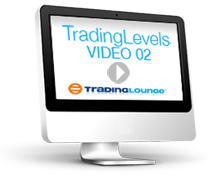
Let’s look at the Major TradingLevels on a few charts on this »VIDEO
MediumTradingLevels
Medium TradingLevels are simply 50% between each Major TradingLevel
1.5, 2.5, 4, 6.5, 9, 11.50, 15, 16.50, 25, 40, 65, 90, 150 and so on.
The Medium TradingLevels are labelled on charts as ML – ML15, ML25, ML4, ML65, ML9 etc
So as an example ML15 would be 1.5 cents, 11.5 cents, 15 cents $1.50, $11.50
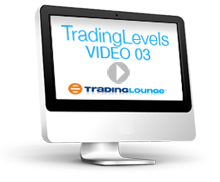
Let’s look at the MediumTradingLevels on a few charts on this »VIDEO
Minor TradingLevels
0.1, 0.2, 0.3, 0.5, 0.8, 1.1, 1.2, 1.3, 1.5, 1.8, 2.1… and so on
Using the same numbers of 1, 2, 3, 5, 8 but going down in the price scale so to speak.
Here's an example of the MinorLevels between $1 and $2.00 using the numbers 1, 2, 3, 5, 8:
$1.10, $1.20, $1.30, $1.50 and $1.80 the $2.00.
The Minor TradingLevels are labelled on charts as mTL – mTL1, mTL2, mTL3
So as an example mTL1 would be $1.10, mTL2 would be $1.20.
I mentioned before that 1 is the strongest number in the markets, the second strongest number is 5 followed by 8. In fact all numbers carry a certain weight and they have a relationship with their neighbours. They also have a certain character – I find that 8 is a profit taking number, so $1.80 before $2.00 would start seeing sellers in the market depth coming in at 1.80, or $18 before 20.00 or .18 cents before 20 cents or .80 cents or $80.00 etc
Once you understand what we are saying the pennies will start to drop and you will be truly able to start reading a market like a musician reads a score of music, there is a lot to learn but any effort made will be rewarded.
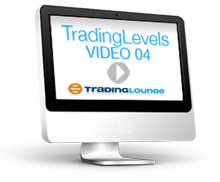
Let’s look at the MinorTradingLevels on a few charts on this »VIDEO
02 Patterns at the TradingLevels
Once you understand the basics of the Major, Medium and Minor TradingLevels, you need to know that correction occur at these levels, markets are simply trend and correction of different degrees and here the MajorLevels carry more weight than the MediumLevels and the MinorLevels less than the MediumLevels, there are other levels and they will be taught later.
Markets being trends and corrections of different degrees that line up with the TradingLevels, so we can expect larger corrections at MajorLevels than MediumLevels and so on, in fact I mentioned that some numbers are stronger than other so TL1 is the strongest followed by TL5 them TL8 there are smaller levels as you get closer to the market but it’s the same principle MinorLevel 1 is mTL1 followed by the second strongest number mTL5 then mTL8 and sure the other numbers have their pecking order.
There is a natural universal order to the expanding and contracting of a markets architecture but it’s a little early to talk about that, however you can see the common sense in the fact that is a market is moving up through 16 17 18 then most people would be thinking of 20, they may be thinking of selling or buying at this level, but the point is most people are thinking of this number, so this is where the most volume will be traded and this is where the correction will occur and yes all the numbers around the 20 are important but in varies degrees and this is what you need to learn.
I also mentioned volume in the last sentence, volume is so important and is the least understood, traders know it’s important as volume creates the price, in fact it confirm the price action, this is a little tricky but it is a subject you need to understand and we will teach you how to read volume, most traders don’t know if it’s selling or buying volume, the volume is the second most important element of trading. I lost track there, but the point is that around these TradingLevels pattern will occur and this is where the pattern recognition is required, recognising certain patterns that occur across the levels, but the bottom line is that after the pattern across a level you need the price supported on a level before going long, we would never buy under a level as we would simply be facing resistance and resistance holds risk and trading is a game of risk management, if we were going short then we would only sell under a levels as a failed retest of that level, the price basically rejecting the level, is the point to sell, this can be confirmed by the volume.
Patterns
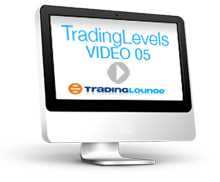
Let’s look at Classic TradingLevels Patterns on a few charts on this »VIDEO
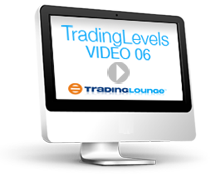
Let’s look at Overshoot TradingLevels Patterns on a few charts on this »VIDEO
|
|
|
|
|
|
|
|
|
|
|
|